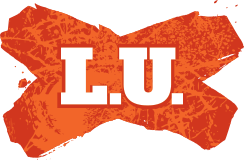In December 1788, not long after the landing of the First Fleet, Governor Phillip ordered the capture of
Arabanoo (born c. 1758). Arabanoo was dressed in European clothes, trained in English and called Manly (after his place of capture). Arabanoo became friendly with the colonists and dined regularly with Phillip, providing the first real information about Aboriginal society and culture for the Europeans.
He was horrified seeing a public flogging and appalled by the decaying bodies of his people, victims of the smallpox epidemic soon after the arrival of the First Fleet. He nursed two sick children named Nabaree and Abaroo back to good health, before he fell victim himself and died in May 1789. Arabanoo was buried in the Governor's garden (now the Museum of Sydney).
Bennelong, born c. 1764 of the Wangal people, is one of the most notable Aboriginal people in the early history of Australia. Also known as Wolarwaree, Ogultroyee and Vogeltroya, he was one of the first to live with the settlers, to be 'civilised' into the European way of life and to enjoy its 'benefits'.
Bennelong (married at the time to Barangaroo) was captured with Colbee (married to Daringa) in November 1789 as part of Phillip's plan to learn the language and customs of the local people. Like Arabanoo, Bennelong soon adopted European dress and ways, and learned English. Bennelong is also known to have taught George Bass the language of the Sydney Aborigines, and gave Phillip the Aboriginal name Wolawaree to locate him in a kinship relationship. This was necessary in order to enable communication of customs and relationship to the land.
Bennelong served the colonisers by teaching them about Aboriginal customs and language in an attempt to aid relations between the two groups. In May 1790 Bennelong was present at Manly when Phillip was speared and persuaded the Governor that the attack was caused by a misunderstanding. Later that year, he asked the Governor to build him a hut on what became known as Bennelong Point, the site of the Sydney Opera House. Here he entertained the Governor a year later.
Although he was said to have had a love-hate relationship with both the settlement and Governor Phillip, Bennelong and another Aborigine named Yemmerrawanie travelled with the Governor to England in 1792, and were presented to King George III on May 24 1793. Yemmerrawanie died in Britain, but Bennelong returned to Sydney in February 1795, after what must have been an enormously challenging confrontation with an alien culture. He exhibited a new sense of dress and behaviour, and tried to influence his family to imitate these things. Bennelong was long troubled by the consumption of alcohol. He frequented Sydney less often and eventually died at Kissing Point (now known as Ryde, on Sydney’s north shore) on January 3, 1813.
Much of the profile of Bennelong has been created by the writings of Judge Advocate David Collins (who preferred the spelling Bennilong) and Captain Watkin Tench (who chose Bennillon). They viewed him as an experiment in 'softening, enlightening and refining a barbarian'. While Bennelong suffered from the worst aspects of enculturation, he also represents those who tried to change the behaviour of Europeans on Aboriginal lands.
Between 1788 and 1802
Pemulwuy lead a guerilla war against the British settlement, and because of his resistance to the invaders, he became one of the most remembered and written about historical figures in Australian Indigenous history. He was regarded as a courageous resistance fighter.
Pemulwuy, a Bidjigal man from the Botany Bay area, saw the damage done to Aboriginal society by the colonisers and was not tempted to befriend them as Arabanoo and Bennelong had done. He led many attacks on the settlement from Botany Bay to the Parramatta area and later to Toongabbee. In 1790 he speared a much disliked convict gamekeeper by the name of John McIntyre and was then wanted for murder. In a battle in 1797 at Parramatta he was shot and hospitalised but escaped, to the delight of his community. Wanted dead or alive, Pemulwuy was finally shot dead in 1802 and his head was sent to England. His son Tedbury was taken prisoner in 1805.
Known for being able to straddle both black and white societies, King Bungaree (also spelt Boongaree, suggesting the derogatory term "Aboriginal") was from Broken Bay and moved to the Sydney area. He was known as a diplomat, mediating between his own people and the government and as an entertainer who impersonated the Governors and other local figures. Bungaree was also an explorer, sailing with Matthew Flinders on his voyages around Australia.
http://www.cityofsydney.nsw.gov.au/barani/themes/theme7.htm


